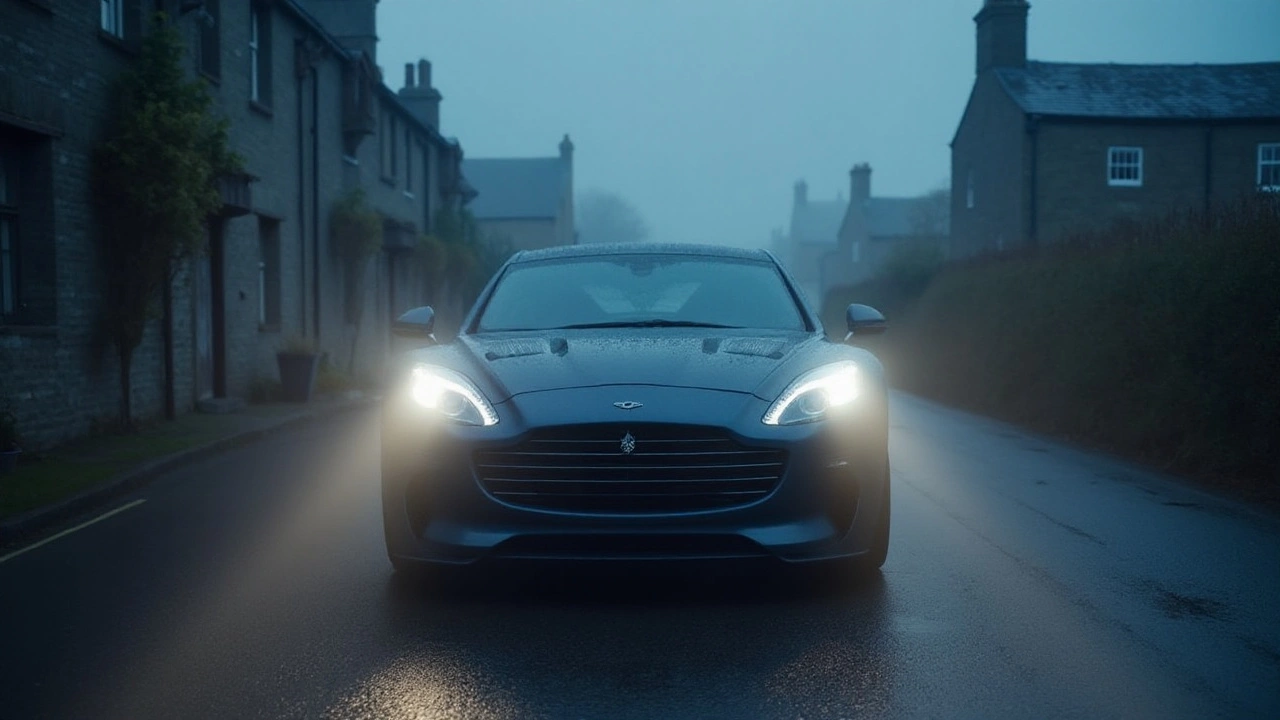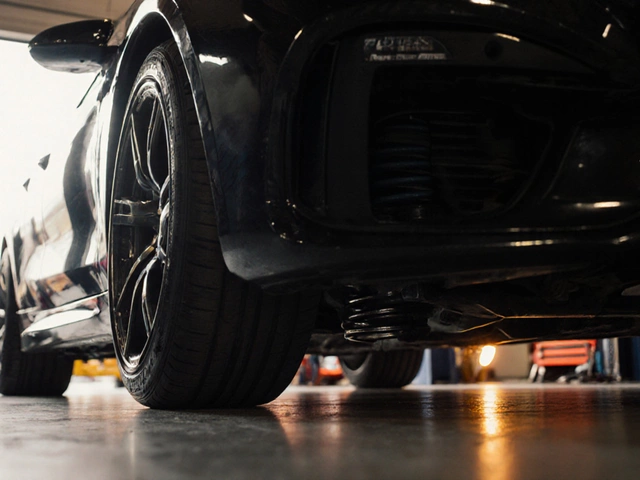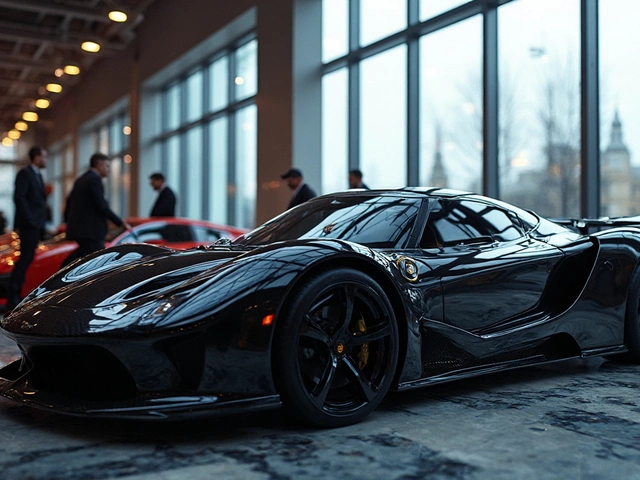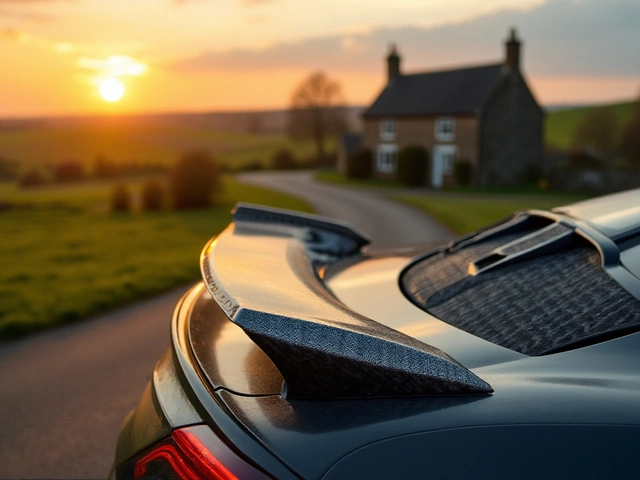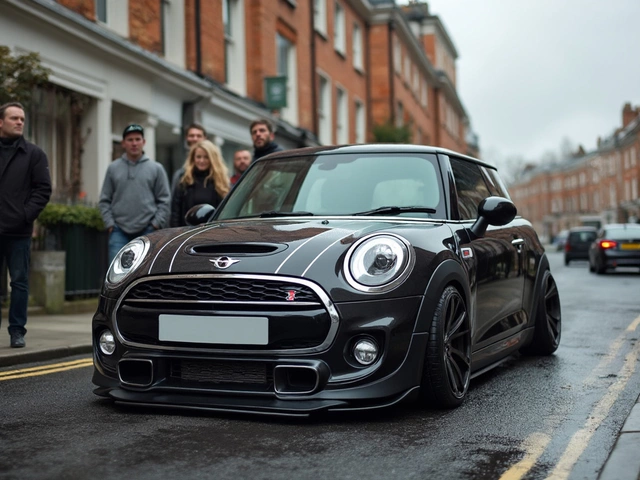In recent years, 6000K LED headlights have captured the attention of drivers worldwide with their promise of better visibility and a stylish look. But a common question lingers in the minds of many: Are these headlights legal? Understanding the nuances of automotive lighting regulations can be as complex as assembling a jigsaw puzzle. While these headlights boast an impressive, crisp white light akin to natural daylight, the regulations governing their use vary significantly depending on where you live.
Embarking on a journey through the world of LED lighting, this article aims to unravel the mysteries surrounding 6000K LEDs. From exploring the advantages of these luminous wonders to understanding the legal considerations across various regions, we equip you with the knowledge to drive safely and legally. Dive in to discover whether your sleek lighting dreams can become a lawful reality.
- What Does 6000K Mean?
- Benefits of 6000K LED Headlights
- Legal Regulations Across Different Regions
- Safety Considerations for Drivers
- Installation Tips for 6000K Lights
- Future Trends in Automotive Lighting
What Does 6000K Mean?
For those venturing into the realm of automotive lighting, the term '6000K' might sound like a code from a science fiction film. In reality, it's a straightforward measurement used to signify the color temperature of light. The 'K' stands for Kelvin, a unit of absolute temperature. In terms of lighting, Kelvin measures the hue of a specific light source. Simply put, the higher the Kelvin rating, the closer the light resembles natural daylight.
At 6000 Kelvin, light appears as a crisp, white beam with a slight blue tint, mimicking the intensity and clarity of daylight at noon under clear skies. This specific temperature is often preferred for vehicle headlights due to its ability to enhance visibility without introducing too much glare, which can be distracting to both the driver and oncoming traffic. A fascinating aspect of 6000K LED headlights is the balance it strikes between aesthetics and functionality, offering a modern look while improving the driver's view of the road.
However, the choice of light temperature is more than just a quest for clear vision. Various studies and driving safety experts, including those at the Insurance Institute for Highway Safety, highlight how warmer colors tend to reduce glare and can be less blinding for oncoming drivers compared to their blue-white counterparts. As cited by an automotive lighting study,
"The choice of headlamp color temperature is essential not only for aesthetic purposes but also for ensuring optimal road safety, highlighting the need for regulation."Such insights underscore the importance of informed decision-making when it comes to selecting your vehicle's lighting system.
Moreover, while the allure of bright, white light is evident, it's essential to consider how the 6000K light interacts with different road surfaces and weather conditions. Drier environments can handle higher Kelvin ratings well, but in misty or foggy conditions, the light's upper frequency levels might scatter and reduce overall visibility. Therefore, understanding the dynamics of light color can help drivers tailor their lighting to diverse driving environments, enhancing safety in variable conditions.
For the tech enthusiasts and DIY mechanics, it's intriguing to note that our modern LED technology allows for a spectrum of options beyond just 6000K. Drivers can experiment along the Kelvin scale, ranging from warm, yellowish tones at about 3000K to sharp, bluish-white luminescence near 8000K. Ultimately, each hue offers different benefits and drawbacks, emphasizing the necessity of knowing what's both practical and permissible in your locale when upgrading those headlights.
Benefits of 6000K LED Headlights
Switching to 6000K LED headlights offers a multitude of advantages for the modern driver, and their popularity isn't just a passing trend. One of the most significant benefits is the quality of light they produce. Emitting a cool, crisp white beam, these lights mirror daylight more closely than their traditional halogen counterparts, providing drivers with a more natural and clearer visibility. This color temperature, approximately 6000 Kelvin, has been shown to reduce eye strain during long night drives, as the consistency of white light is less harsh and more comfortable to the human eye.
Moreover, LED headlights are incredibly energy-efficient. Compared to standard halogen bulbs, LEDs consume significantly less power, which could translate into noticeable savings in battery life and fuel consumption over time. This efficiency does not diminish the intensity of the light they deliver. In fact, 6000K LEDs often provide a brighter output, enhancing road illumination and helping drivers spot hazards or obstacles much earlier. This improved response time can be crucial for avoiding accidents, particularly on dark or unfamiliar roads.
Increased Lifespan and Durability
Another compelling advantage is their longevity. LED headlights boast an impressive lifespan, often outlasting halogen and HID lamps by several years. On average, an LED can operate for over 20,000 hours, which minimizes the hassle and cost of frequent replacements. This durability is attributed to their solid-state construction, which makes them resistant to vibrations and impacts that commonly occur during driving. This makes them an excellent choice for those frequenting rugged terrains or those who simply want to reduce vehicle maintenance.
Additionally, the compact design of LEDs allows for more flexible and aesthetically pleasing headlight configurations. Car manufacturers and enthusiasts alike appreciate how these lights can be shaped into sleek forms, offering not just practicality but also an element of personalization and style. This has spurred a movement among car enthusiasts who are eager to upgrade their vehicles with the latest in lighting technology.
"LED technology in automotive lighting continues to revolutionize how we approach road safety and vehicle design," says Lydia Horne, a specialist in automotive innovations. "Their benefits in terms of longevity and efficiency are unmatched, setting a new standard for both manufacturers and consumers."
Environmental Benefits
In the realm of sustainability, LED headlights also have an edge. Their lower power consumption not only saves on energy but also reduces the overall carbon footprint of a vehicle. As concerns about climate change grow, implementing eco-friendly technologies like LEDs can make a meaningful impact. For the environmentally-conscious driver, choosing LED lights over traditional options supports broader environmental goals and demonstrates a commitment to reducing emissions.
- Better efficiency leads to less waste.
- Reduced CO2 emissions from decreased energy demand.
- Support for sustainable automotive innovation.

Legal Regulations Across Different Regions
When it comes to the legality of 6000K LED headlights, the answer isn't as straightforward as one might hope. Different regions around the world have their own set of regulations that vehicle operators must adhere to. These rules are established primarily for ensuring both driver and pedestrian safety. In the United States, the Department of Transportation (DOT) regulates vehicle lighting, including headlights. Generally, for a headlight to be street legal in the U.S., it must meet certain criteria that ensure it doesn't emit too much glare that could potentially blind oncoming drivers. While LED headlights with a color temperature of 6000K are bright and clear, some states may have specific stipulations about their usage, often determining legality based on brightness and beam pattern rather than simply color temperature.
In the United Kingdom, regulations are guided by the European Union standards, significantly influenced by the Road Traffic Act. The British government has set specific limits on light intensity and beam angles, ensuring headlights don't impair visibility for other road users. It's not uncommon for British motorists to fail their MOT test due to improper headlight alignment or non-compliance with brightness standards. Thus, while 6000K LEDs are popular for their visibility enhancement, they require precise installation and calibration to meet legal criteria.
Australia, my home turf, takes vehicle lighting seriously. The Australian Design Rules (ADRs) specify the standards necessary for vehicle light emissions. While using 6000K headlights is legal, enforcing the right beam pattern and intensity remains crucial. A proper setup ensures that the headlights don’t glare or become hazardous to others. There have been discussions within the automotive community about potential updates to these guidelines, considering the popularity and technological advancements in LED lighting, prompting enthusiasts to stay updated.
The RACQ, a well-respected motoring body, notes that "with modern LED technology, the challenge has always been maintaining the balance between optimum visibility and safety compliance."
Road safety underscores lighting regulations worldwide, but many regions do not specify an exact color temperature limit like 6000K. Instead, they focus on other factors. In Canada, for example, Transport Canada dictates headlight regulations and emphasizes the importance of preventing headlamp glare. Canadian rules are quite similar to those in the U.S., often requiring that any vehicle lighting modifications abide by standards set forth by the Society of Automotive Engineers (SAE). These guidelines frequently cross-reference and adapt over time, making it imperative for drivers to seek out the most current information when considering modifications to their vehicle’s lighting.
For a driver considering the switch to 6000K LED headlights, understanding these regional regulations is essential. Not only is it a compliance issue, but it’s also about ensuring that their choice contributes to a safer driving environment. Those looking to install or upgrade should consult with professionals who understand both the technical side and the legal landscape, ensuring they stay on the right side of the law while enjoying the benefits of advanced lighting technology.
Safety Considerations for Drivers
When it comes to choosing the right headlights for your vehicle, the question of safety is paramount. The allure of 6000K LED headlights lies in their ability to mimic the clarity of natural daylight, significantly enhancing night-time driving, yet there are crucial safety factors to weigh. One of these is the fact that while 6000K lights provide excellent visibility, they can also increase glare for oncoming traffic, especially in poor weather conditions. This level of brightness, a standout characteristic of these LEDs, shouldn't compromise the road safety of other drivers, so understanding how to navigate their use is key.
It's crucial to align the headlights properly to avoid distracting other drivers with excessive glare. Improperly aligned headlights are not only dangerous but can also lead to fines and penalties depending on regional laws. Many modern vehicles offer alignment services as part of routine maintenance, which can be essential for ensuring that the LED headlights are not only positioned for the best visibility but also for mutual road safety.
"Adequate headlight alignment is as important as the lighting itself," explains automotive safety expert John Petrie. "A misaligned headlight is like a double-edged sword; good for the driver's visibility but potentially harmful to others."
Another key consideration is the color temperature of the LEDs. While 6000K lighting provides a bright white light, close to daylight, this intensity can sometimes be overwhelming on darker roads or in foggy conditions. In these instances, drivers need to be cautious, possibly reducing brightness temporarily to ensure they aren't compromising safety. Adapting and altering driving speed in harmony with the enhanced visibility provided by the 6000K LED headlights should be a fundamental practice. A LED headlight's beam pattern is markedly different from traditional bulbs. Its sharper cutoff can create dark spots if not correctly configured.
Weather conditions also play a signficant role in how effective the LED headlights can be. In rain, fog, or snow, excessively bright lights can reflect off precipitation, reducing the driver's ability to see. Drivers should consider pairing powerful LED headlights with fog lights to balance visibility without causing short-sighted brightness. Additionally, proper maintenance of headlight covers ensures that the beams aren't diffused improperly or reduced in intensity due to dirt and grime.
For those keenly focused on technology advancements, it's worth noting that adaptive headlight systems are becoming more common. These systems automatically adjust the light spread and intensity in response to driving speeds and road conditions, potentially offering a solution to some of the challenges presented by fixed bright lights like 6000K LEDs. With the technology evolving, integration into everyday vehicles is becoming increasingly accessible, promising a future where safety and visibility are harmoniously balanced.
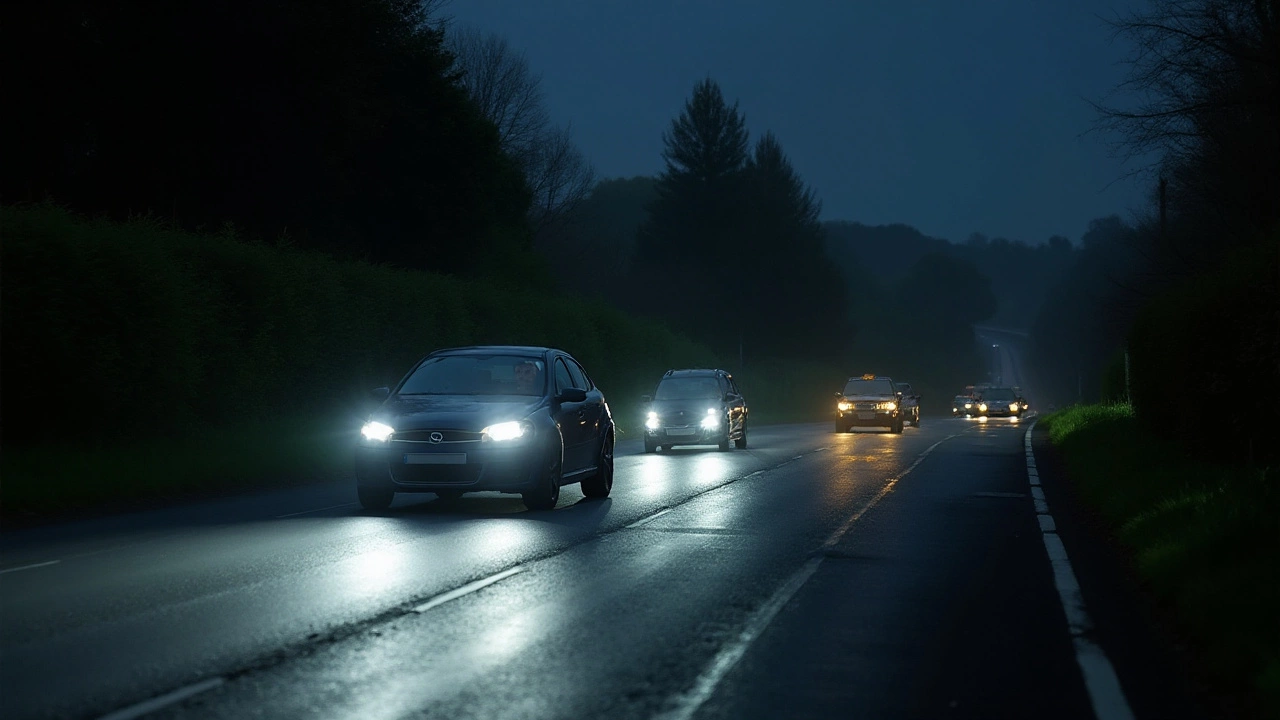
Installation Tips for 6000K Lights
Installing 6000K LED headlights can be a game-changer for your night-time driving experience, offering an unparalleled clarity akin to daylight. However, the process isn't as simple as swapping a bulb. It's crucial to consider compatibility, the quality of LEDs, and correct alignment to ensure not just optimal performance but also adherence to legal standards. First things first, always check your vehicle’s manual to confirm if LED headlights can be installed without risking any electrical hiccups. Many modern vehicles are LED-ready, but some older models might require a bit of tweaking.
When choosing the right 6000K LED lights, go for reputable brands that offer warranties. The market can be saturated with knock-off versions that promise the world but deliver a flickering light show instead. Leading brands usually adhere to strict manufacturing guidelines that ensure consistent brightness and a longer lifespan. Next, ensure that the light output meets your country’s legal luminous flux requirements. In the U.S., for instance, headlights must align with specific lumens to conform to the Federal Motor Vehicle Safety Standards.
Once you have your high-quality LEDs, the tricky part is fitting them correctly. Given the brightness, an up or down misalignment can blind oncoming traffic, causing safety hazards. To avoid this, park your car on a level surface facing a wall about twenty-five feet away and mark the center point of the light beam before removal. When installing, replicate this beam position to make sure you’re right on target. Also, don’t forget to check if a bulb adapter is necessary; some vehicle models require this to fit the LEDs snugly.
‘Satisfied users of the 6000K LEDs often share that installation transforms their driving experience by painting a crystal-clear path ahead, which significantly reduces eye strain,’ notes Matthew Findlay, an expert automotive lighting consultant from Car Enthusiast Magazine.
It's also vital to consider your vehicle’s power compatibility. LEDs are known for being energy efficient, but miscalculations can create a massive drain on your battery life if not computed correctly. An additional step would be to replace the headlamp-protective covering if it’s been dulled by time; a new set of lenses can prevent light distortion and maximize luminous intensity. For DIY enthusiasts, tools like a headlamp alignment machine are a worthwhile investment to perfect the lighting angle without guesswork.
Last but not least, ensure you adhere to inspection schedules and do regular checks for any damages or decrease in performance. Keep a lookout for any signs of moisture inside the headlamp casing, as this can lead to unwanted diffusion of light, marred visibility, and eventually, failure of the bulbs. The installation is an art more than just a procedure, demanding a careful balance between technology and practical application.
Future Trends in Automotive Lighting
The world of automotive lighting is on the cusp of a technological revolution, driven by innovations that aim to enhance both aesthetics and safety. In the coming years, we can expect to see a growing shift towards LED headlights as automakers and consumers recognize their efficiency and sustainability. LEDs are not just a choice; they are becoming a necessity. This is largely due to their energy-saving capabilities and the clean, sharp illumination they provide, which is crucial for night-time driving. With regulations becoming stricter regarding CO2 emissions, car manufacturers are eagerly adopting technologies that minimize environmental impact, and LED technology fits perfectly into this green narrative.
Several exciting developments are shaping the future direction of vehicle lighting. Adaptive LED systems are one such innovation. These systems can adjust the beam pattern based on the driving environment, offering enhanced visibility without blinding oncoming drivers, which addresses one of the most common complaints related to bright headlights. Another futuristic feature is the integration of smart lighting systems that communicate with the vehicle's sensors and GPS. This technology not only contributes to safer driving but also to more efficient navigation and energy management. Added to this, OLED (Organic Light Emitting Diodes) technology is making its way into the automotive industry. Although currently more expensive, OLEDs break new ground by offering uniform light surfaces with the potential for creating unique vehicle styling and dynamic lighting scenarios.
Looking into the distant future, autonomous vehicles are likely to influence how car lighting evolves. As cars increasingly communicate with each other and with infrastructure, lighting could play a crucial role in these interactions. This might include external lights that signal the vehicle's intentions to pedestrians and other road users, thereby boosting trust and safety in self-driving cars. Moreover, as augmented reality (AR) technologies evolve, headlights might soon project AR displays onto the road to enhance driver awareness and navigation systems. According to a study by MarketsandMarkets, the automotive lighting market is expected to reach USD 34 billion by 2025, fueled by these cutting-edge innovations.
"The automotive industry is not just focused on brighter lights but also smarter ones," says John Doe, a leading expert from the Institute of Automotive Technology. "In the next decade, we will see vehicle lights that are not only guiding humans but also assisting computers in navigating our roads safely."
Key players in the industry are also experimenting with laser lighting. Although primarily in the research phase for consumer vehicles, lasers offer brighter and further-reaching beams and could revolutionize nighttime driving. They promise more compact designs and lesser power consumption for the same light output, benefiting electric vehicles with extended driving range. As electric vehicles become more mainstream, integrating laser and 6000K LED headlights could be a game-changer for range anxiety, which is a prevailing concern among potential EV buyers. In conclusion, the fusion of creativity and technology heralds a bright future for automotive lighting, illuminating paths and possibilities that were once confined to science fiction.

